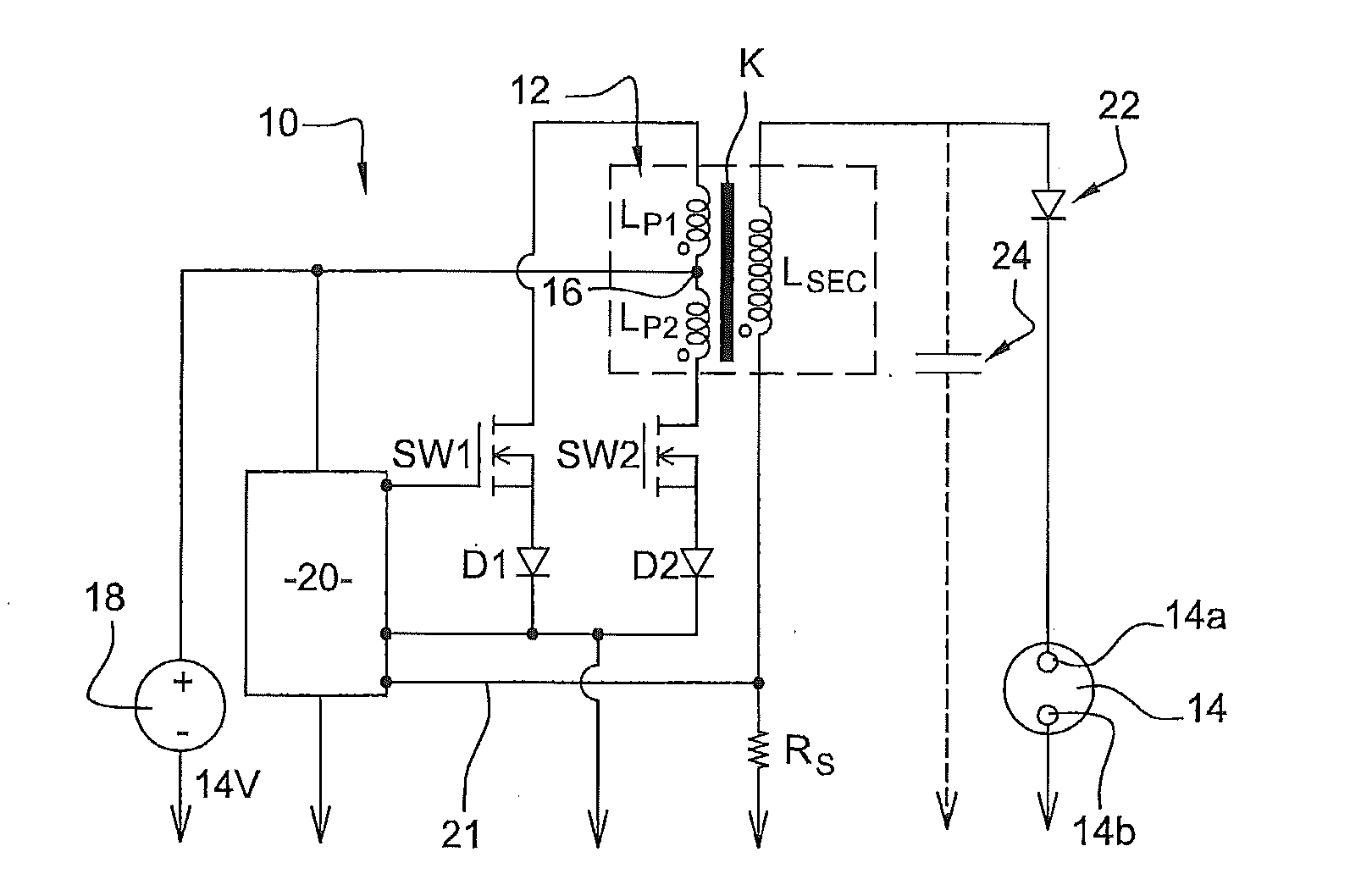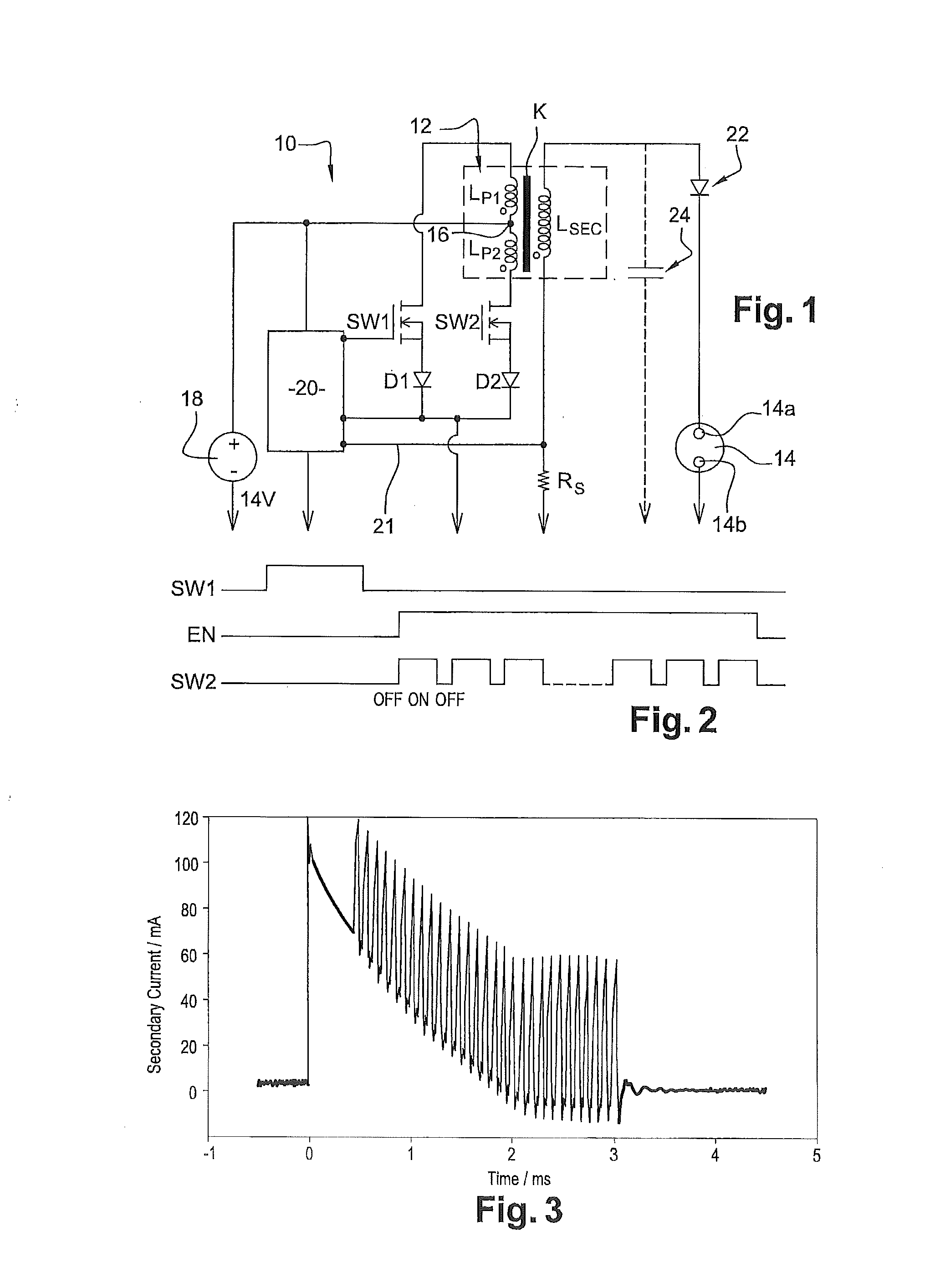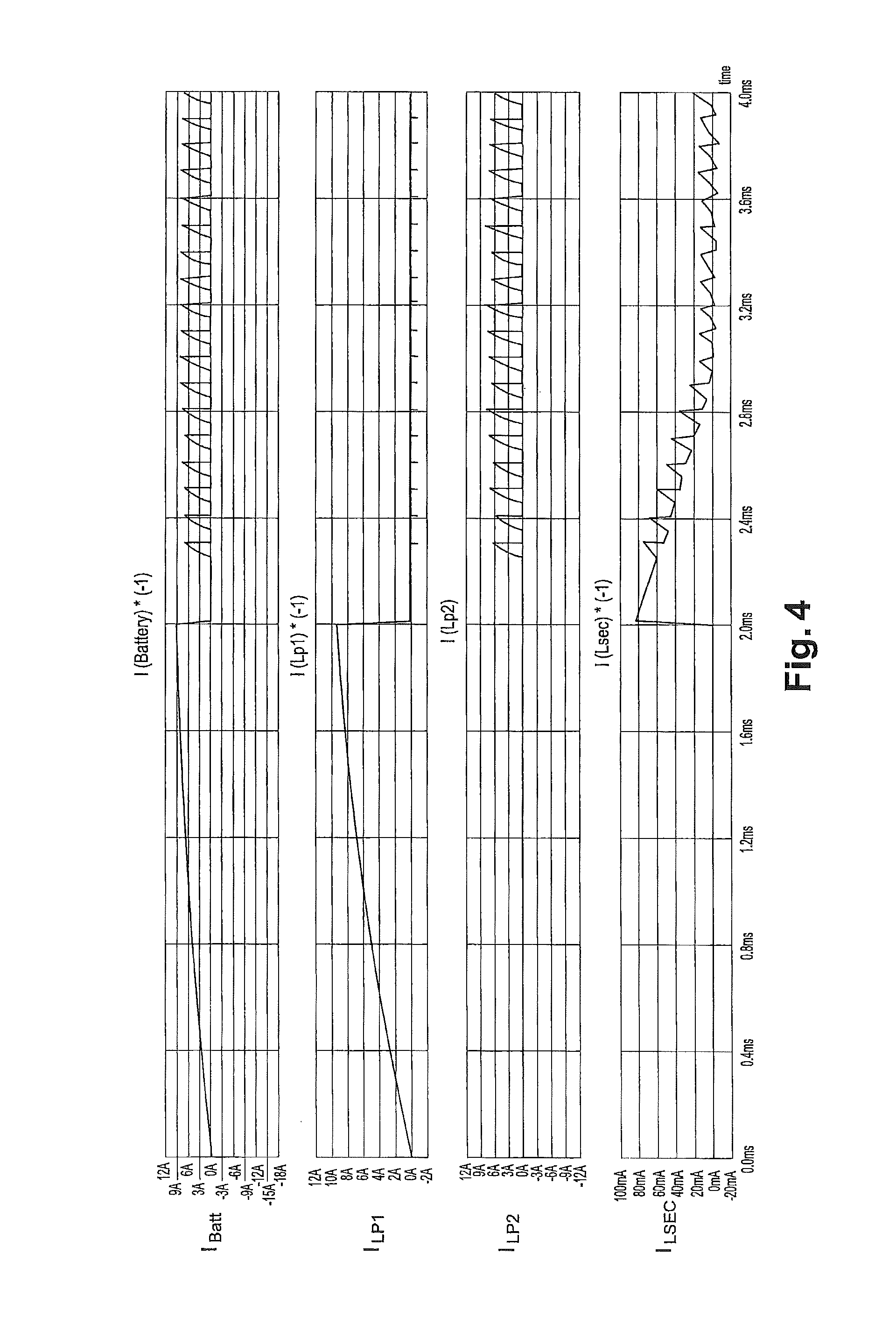Ignition system
a technology of ignition system and ignition system, which is applied in the direction of ignition control, induction energy storage installation, other installations, etc., can solve the problems of unpredictable load situation, unpredictable heat amount, and common ignition system failure (or limit the lean operation)
- Summary
- Abstract
- Description
- Claims
- Application Information
AI Technical Summary
Benefits of technology
Problems solved by technology
Method used
Image
Examples
Embodiment Construction
[0035]With reference to FIG. 1, a preferred embodiment of the present ignition system 10 is shown in electrical schematic, comprising a dual primary winding ignition transformer 12, or ignition coil, servicing a single set of gapped electrodes 14a and 14b in a spark plug 14 such as might be associated with one combustion cylinder of an internal combustion engine (not shown).
[0036]In addition to the two primary windings noted LP1 and LP2, ignition coil 12 comprises a secondary winding LSEC and a common magnetic coupling K1; the three windings are magnetically coupled.
[0037]The system 10 is configured so that the two ends of the first and second primary windings LP1, LP2 may be switched, in an alternative manner, to a common ground such as a chassis ground of an automobile by electrical switches SW1, SW2. The switches SW1 and SW2 may each take the form of an IGBT (insulated gate bipolar transistor) or other appropriate semiconductor-switching device.
[0038]Preferably, the turn ratio of...
PUM
 Login to View More
Login to View More Abstract
Description
Claims
Application Information
 Login to View More
Login to View More - R&D
- Intellectual Property
- Life Sciences
- Materials
- Tech Scout
- Unparalleled Data Quality
- Higher Quality Content
- 60% Fewer Hallucinations
Browse by: Latest US Patents, China's latest patents, Technical Efficacy Thesaurus, Application Domain, Technology Topic, Popular Technical Reports.
© 2025 PatSnap. All rights reserved.Legal|Privacy policy|Modern Slavery Act Transparency Statement|Sitemap|About US| Contact US: help@patsnap.com



